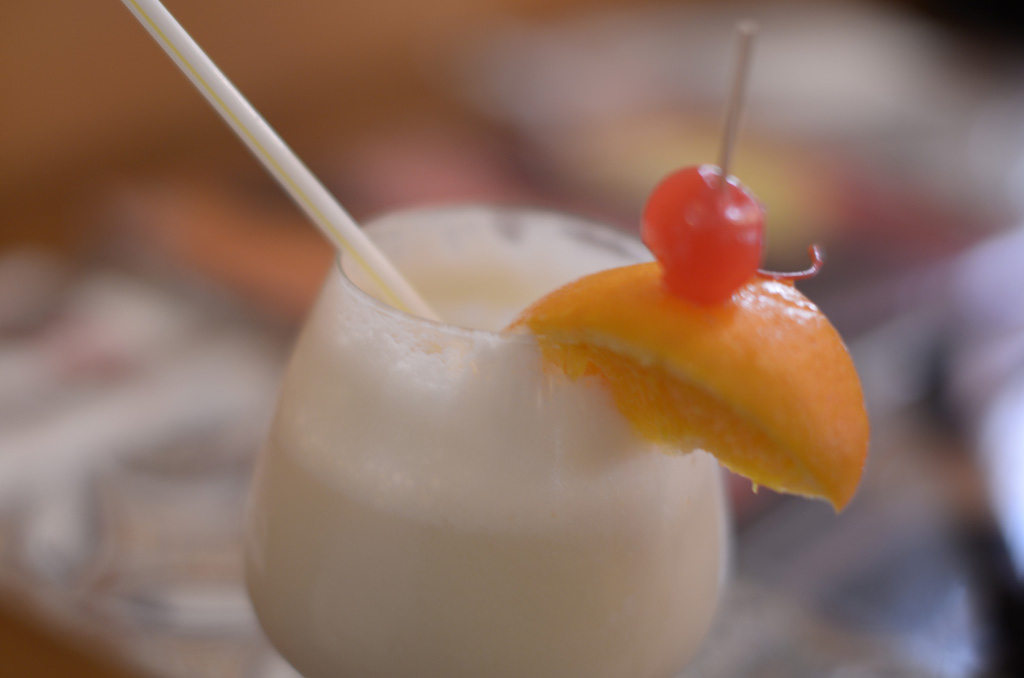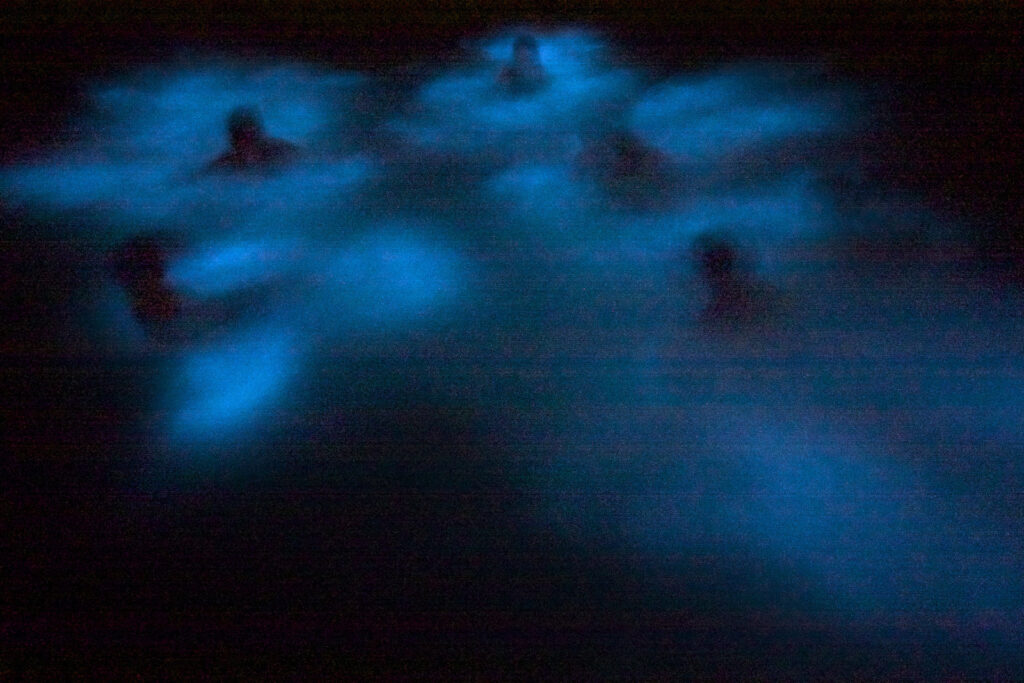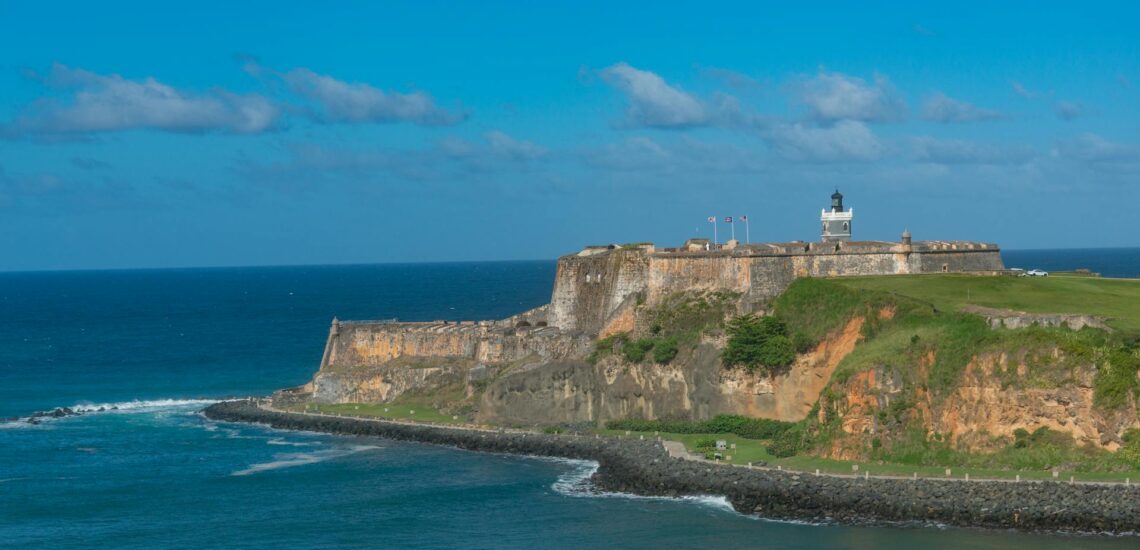Quick facts about Puerto Rico:
- Population: Approximately 3.3 million people.
- Capital: San Juan.
- Official Languages: Spanish, English.
- Currency: United States dollar (USD).
- Government: Territory of the United States with a republican form of government.
- Major Religion: Christianity.
- Geography: Puerto Rico is an unincorporated territory of the United States located in the northeastern Caribbean. It consists of the main island of Puerto Rico and several smaller islands. The terrain is diverse, including mountains, rainforests, and beaches.
Fact 1: Puerto Rico is an archipelago of many islands
While the main island of Puerto Rico is the primary landmass and political center, the territory also includes several smaller islands and cays. Some of the notable islands within the Puerto Rican archipelago include Vieques, Culebra, Mona, and Isla de Caja de Muertos, among others.
While the main island of Puerto Rico is the most developed and densely populated, the smaller islands offer their own unique attractions, including pristine beaches, protected natural areas, and historical sites. Vieques and Culebra, for example, are renowned for their beautiful beaches and vibrant marine life, while Mona Island is known for its rugged terrain and archaeological significance.

Fact 2: Puerto Rico is a territory belonging to the U.S. but is not part of it
Puerto Rico has been a territory of the United States since 1898 when it was acquired from Spain as a result of the Spanish-American War. As a U.S. territory, Puerto Rico is subject to U.S. federal law, and its residents are U.S. citizens. However, Puerto Rico does not have voting representation in the U.S. Congress, and its residents do not have the right to vote in U.S. presidential elections while residing on the island (although they can vote in primary elections).
While Puerto Rico is not a state, it is considered an integral part of the United States, and its residents are entitled to certain rights and privileges afforded to U.S. citizens. The relationship between Puerto Rico and the United States is complex, and there have been ongoing debates and discussions about Puerto Rico’s political status and whether it should become a state, gain independence, or maintain its current territorial status.
Fact 3: Piña Colada cocktail is said to have originated in Puerto Rico
The Piña Colada is a popular tropical cocktail made with rum, coconut cream, and pineapple juice, typically served blended with ice. While there is some debate about the exact origins of the drink, it is widely believed to have been created in Puerto Rico in the mid-20th century.
The Caribe Hilton Hotel in San Juan claims to have invented the Piña Colada in 1954 by bartender Ramón “Monchito” Marrero. According to the hotel’s account, Marrero spent three months experimenting with different combinations of ingredients before finally perfecting the recipe. The drink quickly gained popularity among hotel guests and eventually became one of Puerto Rico’s most iconic cocktails.
In 1978, the Piña Colada was officially declared the national drink of Puerto Rico, further solidifying its association with the island. Today, the Piña Colada remains a beloved beverage enjoyed by people around the world, with variations and adaptations found in bars and restaurants everywhere.

Fact 4: The deepest place in the Atlantic Ocean is near Puerto Rico
The Puerto Rico Trench is a submarine trench situated to the north of the island of Puerto Rico and extends approximately 800 kilometers (500 miles) to the east. It is part of the tectonic boundary between the Caribbean Plate and the North American Plate. The trench reaches a maximum depth of about 8,376 meters (27,480 feet) below sea level, making it the deepest point in the Atlantic Ocean and the eighth deepest trench in the world.
The Puerto Rico Trench is known for its immense depth and geological significance, with its formation attributed to the complex interactions between tectonic plates in the region. It is also a site of interest for scientific research, including studies of deep-sea ecosystems, seismic activity, and oceanic circulation patterns.
Fact 5: One of the largest cave networks in the Americas is in Puerto Rico
The Rio Camuy Cave System is located in the northern part of Puerto Rico, near the town of Camuy. It comprises a network of limestone caves, sinkholes, and underground rivers carved out over millions of years by the Camuy River. The cave system is estimated to extend for over 11 miles (18 kilometers), although only a portion of it is accessible to the public.
Visitors to the Rio Camuy Cave System can explore a series of caverns, tunnels, and chambers adorned with spectacular stalactites, stalagmites, and other geological formations. Guided tours take visitors through the caves, providing insights into their formation, history, and ecological significance. The cave system is also home to unique flora and fauna, including bats, spiders, and other specialized cave-dwelling species.

Fact 6: Coquí frog is often considered an unofficial symbol of Puerto Rico
The Coquí (Eleutherodactylus coqui) is a small frog native to Puerto Rico and is known for its distinctive call, which sounds like “co-quí.” These frogs are an integral part of Puerto Rican culture and are cherished for their role in the island’s ecosystem and their symbolic significance.
The Coquí frog holds a special place in Puerto Rican folklore and traditions, often appearing in songs, stories, and artwork. Its unique call is a familiar sound in the island’s forests and has become a symbol of Puerto Rico’s natural beauty and biodiversity. The Coquí’s presence is also celebrated as a sign of environmental health and vitality.
Fact 7: The San Juan Fortress and the Governor’s Residence is a UNESCO World Heritage Site
The San Juan National Historic Site, inscribed as a UNESCO World Heritage Site in 1983, encompasses the historic fortifications and structures in Old San Juan, including El Morro and San Cristóbal fortresses, as well as the city walls. These fortifications played a crucial role in defending the city of San Juan and the Spanish Empire’s interests in the Caribbean during the colonial period.
The governor’s residence, known as La Fortaleza, is a separate historic site located adjacent to the San Juan National Historic Site. La Fortaleza, built in the 16th century, is recognized as one of the oldest continuously occupied executive residences in the Western Hemisphere and is listed as a UNESCO World Heritage Site along with the historic district of Old San Juan.

Fact 8: The only rain forest in the U.S. National Forest Service is in Puerto Rico
El Yunque National Forest, located in the northeastern part of Puerto Rico, is a lush tropical rainforest covering an area of approximately 28,000 acres (11,331 hectares). It is known for its rich biodiversity, stunning landscapes, and unique ecological features.
As part of the U.S. National Forest System, El Yunque is managed by the U.S. Forest Service and offers visitors the opportunity to explore its pristine natural beauty through hiking trails, scenic viewpoints, and educational programs. The rainforest is characterized by dense vegetation, towering trees, cascading waterfalls, and a wide variety of plant and animal species, including many endemic and endangered species.
Fact 9: Puerto Rico is known for its stunning bioluminescent beaches
Several beaches in Puerto Rico are famous for their bioluminescent waters, caused by the presence of microorganisms called dinoflagellates. These dinoflagellates emit light when disturbed, creating a mesmerizing natural phenomenon known as bioluminescence.
One of the most well-known bioluminescent bays in Puerto Rico is Mosquito Bay, located on the island of Vieques. Mosquito Bay is considered one of the brightest bioluminescent bays in the world, and visitors can experience the enchanting glow by kayaking or taking a boat tour on the bay at night.
Another popular bioluminescent bay in Puerto Rico is Laguna Grande, located in the town of Fajardo on the main island. Here, visitors can also take guided kayak tours to witness the magical glow of the bioluminescent waters.
Note: It is helpful for traveling tourists to know if they need an International Driver’s License in Puerto Rico to rent and drive.

Fact 10: Many of San Juan’s streets are paved with blue Adoquines paving stones
Adoquines are cobblestone-like paving stones made from blue-gray granite and are a distinctive feature of Old San Juan’s streets. These stones were originally brought to Puerto Rico as ballast on Spanish ships during the colonial era and were used to pave the streets of the city.
The use of adoquines in Old San Juan dates back to the 16th century, and the stones have since become an iconic feature of the city’s historic architecture and urban design. Today, the streets of Old San Juan are lined with adoquines, creating a charming and picturesque atmosphere that reflects the city’s colonial heritage.
The blue-gray color of the adoquines is characteristic of the granite found in the region, and the stones are known for their durability and ability to withstand heavy traffic and tropical weather conditions.

Published April 12, 2024 • 10m to read


